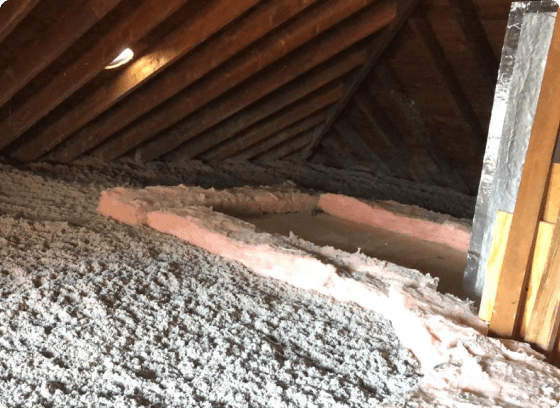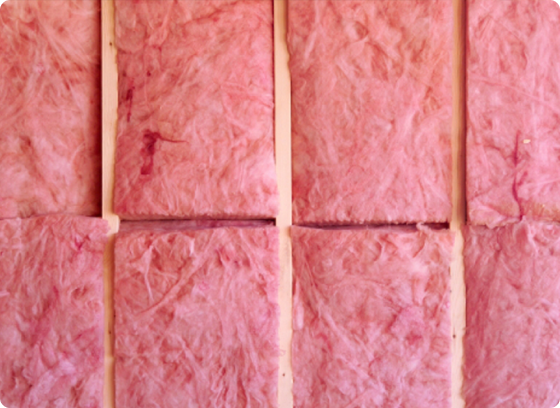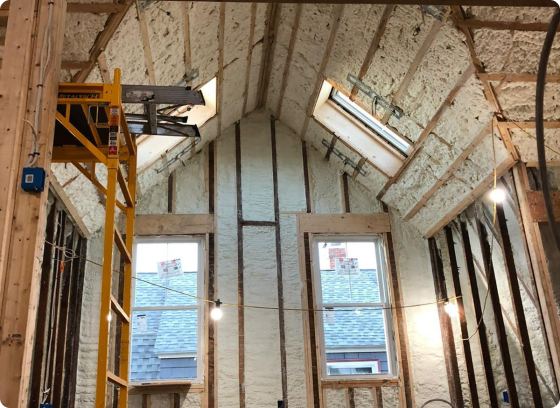Cellulose insulation is plant fiber used in wall and roof cavities to insulate, draught proof and reduce noise. Building insulation is low-thermal-conductivity material used to reduce building heat loss and gain, and reduce noise transmission…


Fiberglass is a type of fiber primarily composed of glass that is used in a wide variety of applications, and is predominantly employed as a residential and commercial thermal insulator. Fiberglass is an attractive choice for home insulation because it the most affordable…
Could you be paying less for heating and cooling in Boston, MA? At Boston Insulation Group, we help budget-conscious, environmentally responsible home and business owners achieve freedom from sky-high utility bills and enjoy greater comfort indoors…







Signs that your insulation may need an upgrade include uneven indoor temperatures, high energy bills, drafts, moisture issues, or if your current insulation is damaged, outdated, or insufficient. Consulting with insulation experts can help assess your insulation needs accurately.
Spray foam insulation is a type of insulation material that is applied as a liquid and expands into a foam, filling gaps and creating an airtight seal. It provides excellent thermal insulation and can help reduce energy consumption.
Spray foam insulation offers several benefits, including improved energy efficiency, reduced air leakage, enhanced indoor comfort, noise reduction, and increased structural strength. It also acts as a barrier against moisture and can help prevent mold growth.
Fiberglass/Roxul insulation is made of fine glass or mineral fibers and comes in batts or rolls. It provides effective thermal insulation by trapping air pockets. Unlike spray foam, it does not create an airtight seal but can be more cost-effective and easier to install in certain situations.
Fiberglass/Roxul insulation is known for its affordability, fire resistance, and excellent sound absorption properties. It is also non-combustible, does not absorb moisture, and does not promote the growth of mold or mildew.
Blow-in insulation, also known as loose-fill insulation, is composed of small particles of cellulose, fiberglass, or other materials. It is typically used in areas where traditional batt insulation is difficult to install, such as attics with limited access or irregular spaces.
Blow-in insulation offers uniform coverage, making it suitable for filling voids and hard-to-reach areas. It can improve energy efficiency, reduce air leakage, provide soundproofing, and resist settling over time.
The choice of insulation depends on various factors, including the specific needs of your project, budget, local climate, building structure, and personal preferences. Consulting with insulation professionals can help you make an informed decision.
The lifespan of insulation depends on various factors, including the type of insulation, installation quality, and environmental conditions. However, most insulation materials are designed to last for several decades. If removal is necessary, it can be a labor-intensive process and may require professional assistance.
Insulation upgrades can result in significant cost savings by reducing heating and cooling expenses. Properly installed insulation helps maintain a consistent indoor temperature, reducing the need for excessive heating or cooling, which can lead to lower energy bills.
Yes, insulation can contribute to improved indoor air quality. It helps create a barrier against outdoor pollutants, reduces the infiltration of allergens and airborne particles, and minimizes drafts, which can enhance overall indoor comfort and health.
Each type of insulation has its environmental advantages. Fiberglass and Roxul insulation are made from recycled glass or stone, making them eco-friendly choices. Spray foam insulation, when properly installed, can enhance energy efficiency, reducing overall environmental impact.
Yes, insulation can provide soundproofing benefits by reducing noise transmission between rooms and from external sources. Spray foam insulation and fiberglass/Roxul insulation are particularly effective in absorbing and dampening sound waves.
Proper insulation and ventilation play a crucial role in preventing ice dams. Insulation minimizes heat loss from the living space to the attic, reducing the likelihood of snow melting on the roof and refreezing at the eaves. Adequate ventilation helps maintain a consistent roof temperature.
Yes, insulation helps regulate indoor temperatures by minimizing heat transfer. In winter, it retains heat inside, making your home feel warmer. In summer, it prevents excessive heat from infiltrating, helping to keep your home cooler and more comfortable.
© 2024 Boston Insulation Group LLC All rights reserved